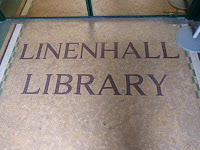The list below is a selection of some of the enquires I received this week in the local studies department;
- American author emailing to find out when he can come in to collect digital copies of archive photographs of the local football teams
- TV researcher from a new family history programme following up earlier emails about local printing and dying industry – what examples of archives/photographs can we send for final selection
- Where can I find plan/map of Dumbarton cemetery?
- American lady enquiring about a Scottish Long Clock – just bought the old clock and the label of the back has a few words leading the enquirer to Dumbarton
- Local walking group wanting to know if I present local history talks over the winter period
- Do we hold copies of local newspapers for 1884 in particular July to October.
- Another local authority contacting us on usage of certain archive photographs that we hold for a new exhibition, looking at reproduction costs / copyright
- Information on a boat built by Denny the ‘Sir Walter Scott’ what information do we hold on its build. Also looking for a copy of the book ‘William Denny Shipbuilder’, he could source a copy for £250.00. (I could send him an inter-library loan for under a tenner. Or show him online where he could buy it for under twenty).
- Man brought in an old bottle he fished out of the River Leven can we tell him anything about the local dairy company name engraved on the bottle.
- Someone wondering why their great grandmother was born in the local Poor House.
- Gentleman from New Zeland looking for information on the Nobles of Ardmore and Ardkinglass’ covering both the Kenny and Geils families. Including local maps and photographs where possible.
- Council Legal Department asking for ownership details from valuation rolls from 1950’s, 60’s and 70’s.
- Library Centenary Year – mug shots in local paper, staff want copies for archive and personal use.

















